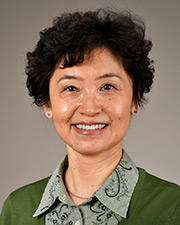Research unveils target to reduce inflammation in aging brain

Research from the Department of Anesthesiology, Critical Care, and Pain Management and the Department of Internal Medicine reveals a new understanding of age-related inflammation in the brain, paving the way for possible treatments of multiple neurological disorders.
Led by Wei Cao, PhD, professor, Center for Perioperative Medicine, Department of Anesthesiology, Critical Care, and Pain Management, the research recently was published as “Fate-mapping and functional dissection reveal perilous influence of type 1 interferon signaling in mouse brain aging in Molecular Neurodegeneration, an open access journal of Springer Nature.
“Neuroinflammation is a universal hallmark of neurodegeneration as well as normal brain aging,” wrote the authors. “The presence of elevated type 1 interferon (IFN-1) has been documented in the aged brain, but its role in promoting degenerative processes, such as the loss of neurons in vulnerable regions, has not been studied in depth.”
Although aging significantly elevates the risk of developing neurodegenerative diseases, the precise role played by age-related neuroinflammation is not understood.
For the study, the investigators used RNA sequencing to compare brain tissues of aged mice – 24 months old– to young mice – 3 months old. To further confirm these age-related molecular changes in the brain, which are known to be key drivers of neuroinflammation, the investigators reviewed two previously published gene sets, and performed a histological survey.
“Our data pinpoint an essential role of microglial IFN-1 response in promoting neuronal dysfunction and loss in the aging brain,” wrote the researchers.
Taking these findings, the researchers moved to focusing on this area for potential treatment. Blocking IFN-I signaling within the aged brain was shown to partially restore several age-related deficits in the brain relevant to multiple cell-types.
“Selective ablation of Ifnar1 from microglia in aged mice significantly reduced overall brain IFN-I signature, dampened microglial reactivity, lessened neuronal loss, restored expression of key neuronal genes and pathways, and diminished the accumulation of lipofuscin, a core hallmark of cellular aging in the brain,” wrote the researchers.
“As IFN-I response has been pathogenically implicated in neurodegeneration, this innate immune axis could be a valid target for therapeutic intervention throughout the course of disease development,” the researchers wrote.
Other Department of Anesthesiology, Critical Care, and Pain Management authors include Ethan Roy, PhD, instructor, and Yanyu Wang, PhD, director of Research Services, and Sepideh Saroukhani, MD, PhD, assistant professor, Department of Internal Medicine, Division of Clinical and Translational Sciences.